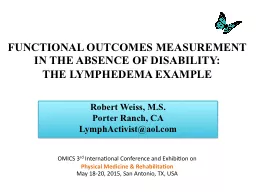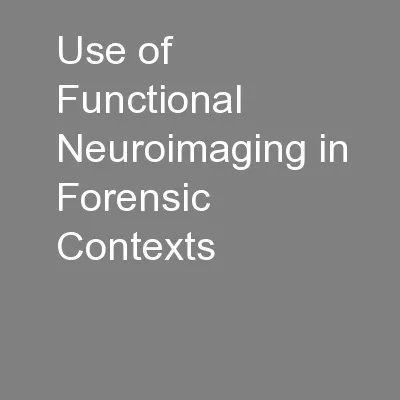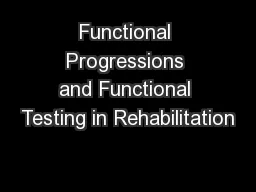PPT-FUNCTIONAL OUTCOMES MEASUREMENT
Author : jane-oiler | Published Date : 2017-04-16
IN THE ABSENCE OF DISABILITY THE LYMPHEDEMA EXAMPLE Robert Weiss MS Porter Ranch CA LymphActivistaolcom OMICS 3 rd International Conference and Exhibition on Physical
Presentation Embed Code
Download Presentation
Download Presentation The PPT/PDF document "FUNCTIONAL OUTCOMES MEASUREMENT" is the property of its rightful owner. Permission is granted to download and print the materials on this website for personal, non-commercial use only, and to display it on your personal computer provided you do not modify the materials and that you retain all copyright notices contained in the materials. By downloading content from our website, you accept the terms of this agreement.
FUNCTIONAL OUTCOMES MEASUREMENT: Transcript
Download Rules Of Document
"FUNCTIONAL OUTCOMES MEASUREMENT"The content belongs to its owner. You may download and print it for personal use, without modification, and keep all copyright notices. By downloading, you agree to these terms.
Related Documents














